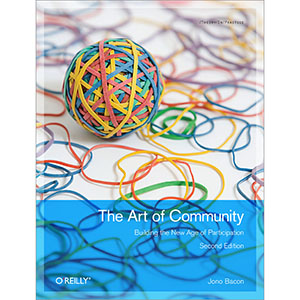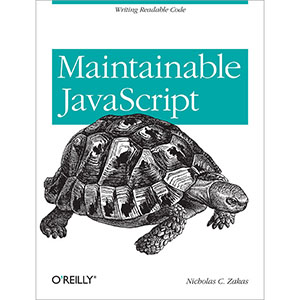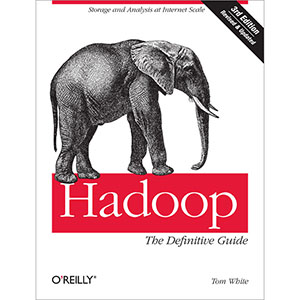| The Art of Community, 2nd Edition Posted: 29 May 2012 09:22 AM PDT 
Book Description Online communities provide a wide range of opportunities for supporting a cause, marketing a product or service, or building open source software. The Art of Community helps you recruit members, motivate them, and manage them as active participants. Author Jono Bacon offers experiences and observations from his 14-year effort to build and manage communities, including his current position as manager for Ubuntu. Discover how your community can become a reliable support network, a valuable source of new ideas, and a powerful marketing force. This expanded edition shows you how to keep community projects on track, make use of social media, and organize collaborative events. Interviews with 12 community management leaders, including Linus Torvalds, Tim O'Reilly, and Mike Shinoda, provide useful insights. - Develop specific objectives and goals for building your community
- Build processes to help contributors perform tasks, work together, and share successes
- Provide tools and infrastructure that enable members to work quickly
- Create buzz around your community to get more people involved
- Harness social media to broadcast information, collaborate, and get feedback
- Use several techniques to track progress on community goals
- Identify and manage conflict, such as dealing with divisive personalities
Table of Contents
Chapter 1. The Art of Community
Chapter 2. Planning Your Community
Chapter 3. Communicating Clearly
Chapter 4. Processes: Simple Is Sustainable
Chapter 5. Supporting Workflow with Tools and Data
Chapter 6. Social Media
Chapter 7. Building Buzz
Chapter 8. Measuring Community
Chapter 9. Managing and Tracking Work
Chapter 10. Governance
Chapter 11. Handling Conflict and Relationships
Chapter 12. Creating and Running Events
Chapter 13. Hiring a Community Manager
Chapter 14. Community Case Book
Chapter 15. Onward and Upward Book Details - Paperback: 576 pages
- Publisher: O’Reilly Media; 2nd Edition (May 2012)
- Language: English
- ISBN-10: 1449312063
- ISBN-13: 978-1449312060
Note: There is a file embedded within this post, please visit this post to download the file. Related Posts 

|
| Maintainable JavaScript Posted: 29 May 2012 09:17 AM PDT 
Book Description You may have definite ideas about writing code when working alone, but team development requires that everyone use the same approach. With the JavaScript practices in this book—including code style, programming tips, and automation—you'll learn how to write maintainable code that other team members can easily understand, adapt, and extend. Author Nicholas Zakas assembled this collection of best practices as a front-end tech leader at Yahoo!, after completing his own journey from solo hacker to team player. He also includes rules recommended by other industry authorities. Use these tips and techniques to help your team set aside individual preferences and function at a higher level. - Establish specific code conventions for your team
- Use tools such as JSLint and JSHint to keep your team on track
- Adopt style guidelines, such as basic formatting, to help your team produce uniform code
- Apply several programming practices to solve problems and improve code quality
- Create an automated JavaScript build system using a variety of utilities
- Integrate browser-based JavaScript testing with tools such as the YUI Test Selenium Driver
Table of Contents
Part I: Style Guidelines
Chapter 1. Basic Formatting
Chapter 2. Comments
Chapter 3. Statements and Expressions
Chapter 4. Variables, Functions, and Operators Part II: Programming Practices
Chapter 5. Loose Coupling of UI Layers
Chapter 6. Avoid Globals
Chapter 7. Event Handling
Chapter 8. Avoid Null Comparisons
Chapter 9. Separate Configuration Data from Code
Chapter 10. Throw Your Own Errors
Chapter 11. Don't Modify Objects You Don't Own
Chapter 12. Browser Detection Part III: Automation
Chapter 13. File and Directory Structure
Chapter 14. Ant
Chapter 15. Validation
Chapter 16. Concatenation and Baking
Chapter 17. Minification and Compression
Chapter 18. Documentation
Chapter 19. Automated Testing
Chapter 20. Putting It Together Appendix A. JavaScript Style Guide
Appendix B. JavaScript Tools Book Details - Paperback: 242 pages
- Publisher: O’Reilly Media (May 2012)
- Language: English
- ISBN-10: 1449327680
- ISBN-13: 978-1449327682
Note: There is a file embedded within this post, please visit this post to download the file. Related Posts 

|
| Hadoop: The Definitive Guide, 3rd Edition Posted: 29 May 2012 09:10 AM PDT 
Book Description Ready to unlock the power of your data? With this comprehensive guide, you'll learn how to build and maintain reliable, scalable, distributed systems with Apache Hadoop. This book is ideal for programmers looking to analyze datasets of any size, and for administrators who want to set up and run Hadoop clusters. You'll find illuminating case studies that demonstrate how Hadoop is used to solve specific problems. This third edition covers recent changes to Hadoop, including material on the new MapReduce API, as well as MapReduce 2 and its more flexible execution model (YARN). - Store large datasets with the Hadoop Distributed File System (HDFS)
- Run distributed computations with MapReduce
- Use Hadoop's data and I/O building blocks for compression, data integrity, serialization (including Avro), and persistence
- Discover common pitfalls and advanced features for writing real-world MapReduce programs
- Design, build, and administer a dedicated Hadoop cluster—or run Hadoop in the cloud
- Load data from relational databases into HDFS, using Sqoop
- Perform large-scale data processing with the Pig query language
- Analyze datasets with Hive, Hadoop's data warehousing system
- Take advantage of HBase for structured and semi-structured data, and ZooKeeper for building distributed systems
Table of Contents
Chapter 1. Meet Hadoop
Chapter 2. MapReduce
Chapter 3. The Hadoop Distributed Filesystem
Chapter 4. Hadoop I/O
Chapter 5. Developing a MapReduce Application
Chapter 6. How MapReduce Works
Chapter 7. MapReduce Types and Formats
Chapter 8. MapReduce Features
Chapter 9. Setting Up a Hadoop Cluster
Chapter 10. Administering Hadoop
Chapter 11. Pig
Chapter 12. Hive
Chapter 13. HBase
Chapter 14. ZooKeeper
Chapter 15. Sqoop
Chapter 16. Case Studies Appendix A. Installing Apache Hadoop
Appendix B. Cloudera's Distribution Including Apache Hadoop
Appendix C. Preparing the NCDC Weather Data Book Details - Paperback: 630 pages
- Publisher: O’Reilly Media; 3rd Edition (May 2012)
- Language: English
- ISBN-10: 1449311520
- ISBN-13: 978-1449311520
Note: There is a file embedded within this post, please visit this post to download the file. Related Posts 

|
| Adobe Edge Preview 5: The Missing Manual Posted: 29 May 2012 09:04 AM PDT 
Book Description Want to create animated graphics for iPhone, iPad and the Web, using familiar Adobe features? You've come to the right guide. Adobe Edge Preview 5: The Missing Manual shows you how to build HTML5 and JavaScript graphics with Adobe multimedia tools. No programming experience? No problem. Adobe Edge writes all the code for you. With this book, you'll be designing great-looking web apps in no time. The important stuff you need to know: - Get to know the workspace. Learn how Adobe Edge Preview 5 performs its magic.
- Create and import graphics. Make drawings with Edge's tools, or use art you designed in other programs.
- Work with text. Build menus, label buttons, provide instructions, and perform other tasks.
- Jump into animation. Master Edge's elements, properties, and timeline panels.
- Make it interactive. Use triggers and actions to give users control over their web experience.
- Peek behind the curtain. Understand how HTML and CSS documents work.
- Dig into JavaScript. Customize your projects by tweaking your code.
Table of Contents
Part I: Working with the Stage
Chapter 1. Introducing Adobe Edge
Chapter 2. Creating and Animating Art
Chapter 3. Adding and Formatting Text Part II: Animation with Edge
Chapter 4. Learning Timeline and Transition Techniques
Chapter 5. Triggering Actions Part III: Edge with HTML5 and JavaScript
Chapter 6. Working Smart with Symbols
Chapter 7. Working with Basic HTML and CSS
Chapter 8. Controlling Your Animations with JavaScript and jQuery
Chapter 9. Helpful JavaScript Tricks Book Details - Paperback: 226 pages
- Publisher: O’Reilly Media / Pogue Press (May 2012)
- Language: English
- ISBN-10: 1449330304
- ISBN-13: 978-1449330309
Note: There is a file embedded within this post, please visit this post to download the file. Related Posts 

|
| Take Control of Your 802.11n AirPort Network, 3rd Edition Posted: 29 May 2012 08:58 AM PDT 
Book Description If you’re trying to solve a particular problem, you can jump in and read the topics in this ebook in any order, but if you start at the beginning, you’ll learn how Apple’s 802.11n gear fits into the world of Wi-Fi networking. With that background, you’ll learn where to position and how to set up base stations, with diagrams showing common network scenarios – see two examples above – and with step-by-step instructions for configuring key Internet sharing and security options and connecting client computers. For those who have funky Internet connections or tricky IP addressing needs, Glenn provides extended advice for creating a working Wi-Fi network. Glenn provides real-world directions for important scenarios, including how to: Create a basic (or not so basic) Wi-Fi network, using Apple’s base stations: - Set up a wireless network with a single base station, or with multiple base stations – whether you want to extend a network with Ethernet or a wireless connection (or a mix of the two), Glenn examines your options and provides configuration steps. He also touches briefly on powerline connections.
- Keep your existing network, but replace an older or broken base station with a new one.
- Export your base station’s configuration, either to make a backup or to create a model configuration to use on other base stations.
- Connect Macs (specific steps for 10.5 Leopard and later), iOS devices, and Windows 7 computers to your network.
- Set up reliable and relevant security for your network. Also, add a guest network that gives your guests Internet access while restricting their access to local resources.
Attach peripherals to your network: - Add a USB-connected printer, and connect to the printer from Mac and Windows computers.
- Add a USB-attached drive to a Time Capsule or AirPort Extreme, and configure client access.
- Connect a 2nd- or 3rd-generation Apple TV to your network
Do more networking: - Set up a Time Machine backup to a Time Capsule base station.
- Expand the capabilities of an AirPort Express by setting up audio streaming, trying Rogue Amoeba’s Airfoil media streaming utility, or extending your network with ProxySTA.
- Share files conveniently and wirelessly with Lion’s AirDrop file-transfer feature, plus understand the type of networking that AirDrop uses.
- Put computers more directly on the Internet with port mapping or a default host.
- Set up Back to My Mac with iCloud in order to access an AirPort or Time Capsule drive remotely, or to configure your base station remotely.
- Set up a Software Base Station or do ad-hoc networking.
Understand what’s going on and solve problems: - Find out what the icon on your Wi-Fi menu means, and discover what the colored light on your base station is trying to tell you.
- Learn what a MAC address is, plus how to find it. (Hint, 1 Infinite Loop is not the MAC address that you seek.)
- Read background information about the bands and channels used with Wi-Fi networking, understand how Apple’s Wi-Fi gear fits into the picture, and get ideas for how to create an optimal network that avoids interference problems.
- Understand the differences among AirPort Utility 6 (for Mac), AirPort Utility for iOS, and AirPort Utility 5 (for Mac and Windows). Find a free download link for the previous edition of this ebook, which covers AirPort Utility 5.
- Learn how to update the firmware in your base station, and how to revert to an older version of your firmware, if necessary.
“If anyone knows about real-world Wi-Fi, it’s Glenn Fleishman.”
—Mark Frauenfelder, co-founder of bOING bOING Book Details - Paperback: 187 pages
- Publisher: TidBITS Publishing, Inc. (May 2012)
- Language: English
- ISBN-10: 1615424059
- ISBN-13: 978-1615424054
Note: There is a file embedded within this post, please visit this post to download the file. Related Posts 

|







Tidak ada komentar:
Posting Komentar